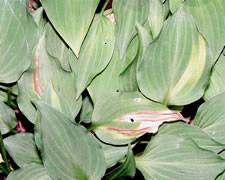Land managers often find it arduous to balance the need for effective weed and pest management with conserving the land’s valuable resources. It is not a secret that pesticides are full of chemicals and these are harmful to humans and animals alike. To reduce the negative environmental and health impacts, many cities and states are implementing stringent restrictions on the use of chemical pesticides in their parks and recreation departments.
Why Are Chemical Pesticides So Dangerous?
Since pesticides kill insect pests, such as the Japanese Beetle, imagine the effects of these chemicals in the human body. Aside from direct exposure to chemical pesticides, there is the danger of these chemicals leaching into the water supply.
When vast amounts of land are sprayed with pesticides, these chemicals sink deep into the ground and often find their way into the groundwater supply. Countless studies have linked pesticide exposure to cancer, Alzheimer’s Disease, and even ADHD. Because the dangers of chemical pesticides are so well documented, the Environmental Protection Agency is working at the federal level to control how people use pesticides.
Many Cities Are Leading the Way in Stringent Chemical Pesticide Restrictions
The EPA allows states to adopt their own chemical pesticide rules and regulations. Just like the EPA, states gain their power to put restrictions in place by the Federal Insecticide, Fungicide, and Rodenticide Act. Many cities across the United States are becoming organic cities with no chemicals being used for weed or pest control. The following are some of the major cities that have adopted these stringent policies.
Tucson, Arizona
Several cities in California, including Burbank, Malibu, Laguna Hills, Novato, and San Clemente
Boulder, Colorado
Middletown and Oxford, Connecticut
Jupiter, Miami, and Stuart, Florida
Moscow, Idaho
Several cities in Illinois, including Franklin Park, Evanston, and Naperville
Story County, Iowa
Lawrence, Kansas
West Chester, Pennsylvania
There are at least twenty states that have begun the initiative to go as chemical free as possible. Even when handing invasive pests like Japanese Beetles, they use organic pesticides that are not harmful to the environment.
What Are the Benefits of Organic Pesticides?
With many cities across the United States now adopting organic pesticide laws, it makes sense this will eventually trickle down to the individual level. If a state’s park and recreation departments forbid chemical pesticides, it will not be long before the state and EPA step in to stop individuals from using them. There are many benefits to using Botanical Insecticides, including the following.
Botanical Insecticides are made from plant sources so they are not toxic to the environment. The main reason these natural insecticides are safer is because the components of these treatments break down into harmless compounds within minutes or hours of application.
Natural pesticides are chemically very close to the plants they derive from, so the soil can break them down without causing any toxic byproducts to develop.
Many city parks and recreation programs have found using these insecticides helps to reduce the costs of treating pests like Japanese Beetles.
Natural pesticides can target unwanted pests while being less harmful to beneficial insects. Creating the ideal balance between the protection of beneficial insect species, while eliminating unwanted pest insects is not always easy for parks and recreation departments.
Botanical Insecticides were widely used up until the 1940s when synthetic pesticides became available. Because of the dangers of synthetic chemical pesticides, botanical options are making a big comeback.
Most natural insecticides do not harm plant life and they are safe for humans and animals. Overall, using natural and organic means of insect elimination is safer for the environment. As with any pesticide, the products must be used according to exact instructions.
Choosing the Right Products Is Essential
Companies like Enviro Selects are leading the way in providing organic and natural products that reduce dangers to the environment and to your human health. Two of their proven and effective natural insecticides, Azaguard Insecticide and Bioceres WP are effective options that can be used in a variety of applications. These powerful broad-spectrum insecticides are both OMRI approved and safe for the environment, yet also powerful enough to kill many species of insects, including Aphids, Beetles, Sawflies, Webworms, and more.
Products like Zerotol Fungicide and Fiesta Herbicide can also be used to naturally keep parks and city land free of weeds and invasive algae to allow for healthy plant growth.
Conclusion
When these environmentally friendly products are used in conjunction with one another, parks and recreation departments can meet the stringent guidelines put forth at the state and federal level. These products help to ensure parklands are safer for wildlife and humans alike. Enviro Selects works diligently to ensure that all products they carry meet the guidelines set forth by the Environmental Protection Agency.

